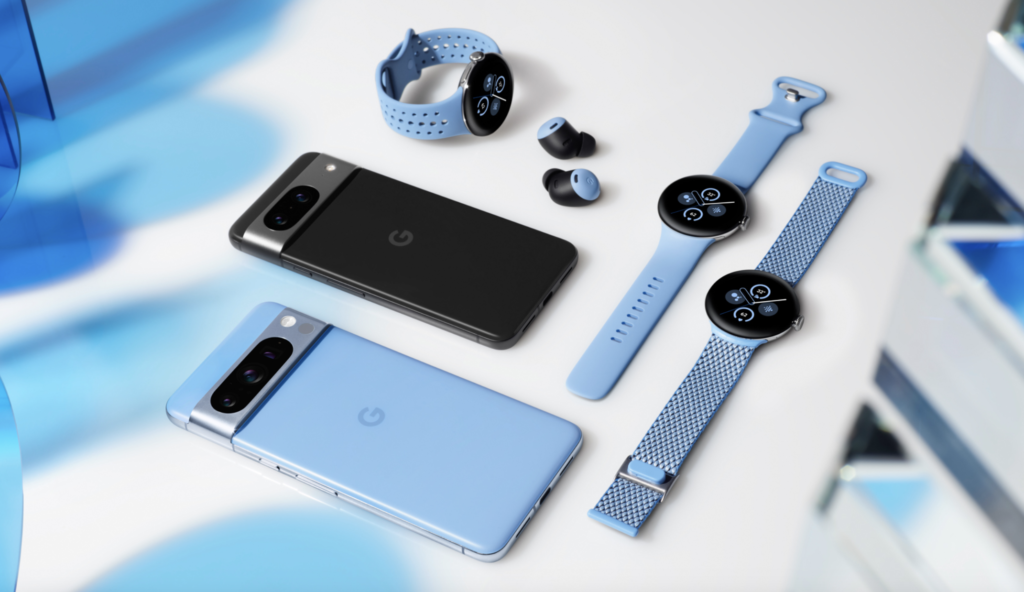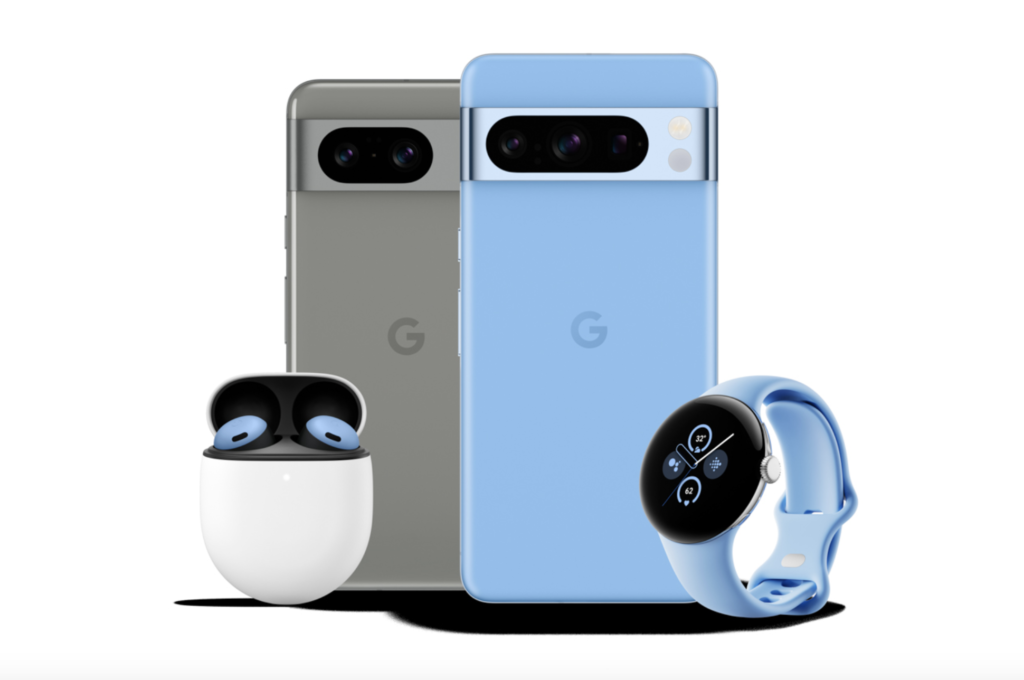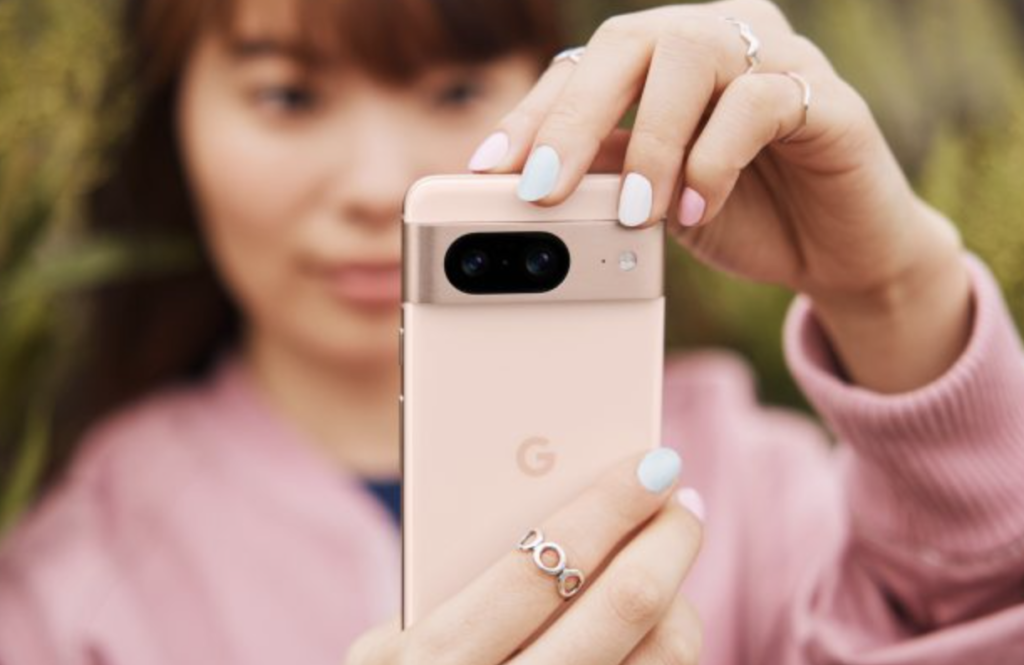Just under a month after Apple announced its newest iPhone 15 range, Google finally hit back with the launch of the Pixel 8 and 8 Pro, its latest flagship Android phones. The Pixel 8 series comes with some new hardware features, alongside Google’s newest smartphone chip, the Tensor G3. It also comes with Android 14 onboard, which introduces some new software features.
While the new phones have been pretty much leaked to oblivion now, we still want to go over the features that you can expect if you decide on getting the Pixel 8 or 8 Pro – let’s take a look!
External Design and Displays

In terms of design, both phones come with the familiar look that Google has used in its devices since the Pixel 6 and 7, with a camera window that’s become the signature design accent of recent Pixel phones. The Pixel 8 and 8 Pro also come with flat displays (no more curved edges here), as well as more rounded corners.
Speaking of the display, there’s a noticeable difference in terms of size. The Pixel 8 comes with a new smaller 6.2-inch OLED screen (down from 6.3) with 1080 x 2400 pixel resolution, while the 8 Pro packs a larger 6.7-inch LTPO OLED screen, which comes with a 1344 x 2992 pixel resolution. It’s also brighter at up to 2400 nits of peak brightness, versus 2000 on the regular 8. For protection, the 8 Pro features Gorilla Glass Victus 2, with Gorilla Glass Victus on the regular 8.
Interestingly, Google now refers to the displays on the 8 and 8 Pro as “Actua” displays, which is a fancy way of introducing new hardware upgrades on its phones.
Internal Hardware

Inside, both devices are powered by the Google Tensor G3, Google’s latest mobile SoC. The G3 is aided by the Titan M2 security co-processor, along with 12GB of LPDDR5X RAM, and up to 1TB of UFS 3.1 storage. One could say that there’s a lot riding on the success of the Tensor G3, given the somewhat lackluster performance of the Tensor G2 on the Pixel 7 series, especially when it came to battery efficiency and thermal management.
As for battery capacity, the Pixel 8 comes with a minimum 4485 mAh capacity cell and a typical 4575 mAh battery, while the Pixel 8 Pro features a minimum 4950 mAh capacity cell and a typical 5050 mAh capacity. Google says that both phones will come with support for fast-charging, with up to 27W wired fast-charging on the Pixel 8, and 30W on the Pixel 8 Pro for 50% battery in just under 30 minutes of charging. We’re hoping that this isn’t just marketing speak, given the somewhat slow charging on the Pixel 7 series. Of course, there’s also support for wireless and reverse wireless charging.
Cameras

Both phones are equipped with a triple camera system with a 50MP main wide sensor with 1.2 μm pixel width and ƒ/1.68 aperture, although the regular Pixel 8 comes with one less lens, as only the Pixel 8 Pro will feature a 48MP telephoto lens. Both the 8 and 8 Pro will pack an ultrawide lens, although this is limited to a 12MP sensor on the regular 8, with a much higher resolution 48MP sensor on the 8 Pro. Additionally, both phones will feature 10.5MP selfie cameras.
With the exception of a few exclusive tricks and Pro Controls on the Pixel 8 Pro, both phones will come with a lot of the same camera features including Ultra HDR, Magic Editor and Magic Eraser, Motion Mode, and Astrophotography, to name a few. Meanwhile, video recording maxes out at 4K resolution and 60fps for both the front and main rear cameras.
Pricing and Availability
The Google Pixel 8 and Pixel 8 Pro will be available in the UK for pre-order today. The regular 8 Model comes priced starting at £699, while the 8 Pro comes with a more expensive £999 price tag. Buyers in the UK will be able to purchase them via the Google Store, official retail partners, as well as carriers including EE, Three, Vodafone, O2, and more.




2 Comments
Pingback: Beyond Hardware: Google’s New Pixel 8 Phones Take AI Features to a New Level
Pingback: DXOMARK Ranks Google’s New Pixels at Top Spot for Display Quality